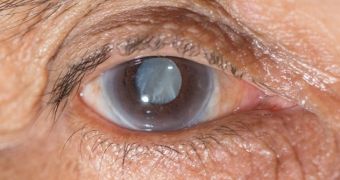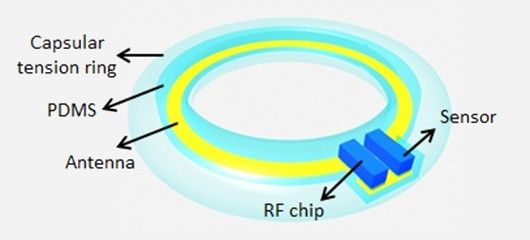Glaucomas are nasty things, eye diseases that can lead to blindness by damaging the optic nerve through a high eye pressure. Normally, to detect the signs of glaucoma you have to visit an ophthalmologist, but this new sensor means you might not have to in the future.
A team of engineers from the University of Washington have come up with a prototype sensor that, when placed permanently in a person's eye, can track changes in the IOP (intraocular pressure).
Patients who risk contacting the disease can have their eyes checked several times a year, but it's not exactly helpful when the eye pressure can change multiple times each day.
Thus, the early warning signs might not be obvious, or even slight, to ophthalmologists. And since going blind is most assuredly not fun, the UW team toiled through days and days to get the sensor done.
Many people will probably shy away from the idea of implanting anything electronic in their bodies, especially since the sensor is supposed to be a permanent fixture.
However, the UW engineers believe they are on to something, and intend to push forward with their idea so that damage to vision is no longer noticed late in the game.
Yi-Chun Shih, a former doctoral student at UW, also drew attention to how there's no consistent way to check the effectiveness of medications.
So how does the sensor work? It's all based on radio waves. A low-power sensor harnesses radio waves both for data and power, using a thin antenna that is wound around the sensor's perimeter.
Essentially, the sensor traces your iris. Now, a small pressure sensor chip gets the energy harnessed this way, and can detect frequency shifts, which are interpreted as changes in eye pressure.
A nearby receiver constantly receives the data recorded about these changes, and also calculates the eye current pressure itself. The receiver can be a smartphone, a tablet, a smartwatch, anything at least remotely intelligent really.
In theory, it should be easy enough to implant the sensor in someone's eyes, In fact, it could be an add-on to cataract surgeries, which are common procedures given to millions of people yearly. The pressure in-eye sensor would even help stave off a second surgery, because the replacement lens would already be smarter than normal.
"Oftentimes damage to vision is noticed late in the game, and we can’t treat patients effectively by the time they are diagnosed with glaucoma," says Yi-Chun Shih, a former doctoral student at UW. "Or, if medications are given, there’s no consistent way to check their effectiveness."

 14 DAY TRIAL //
14 DAY TRIAL // 

